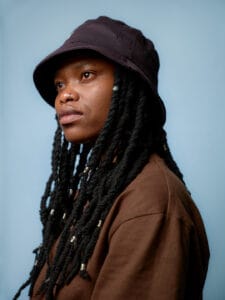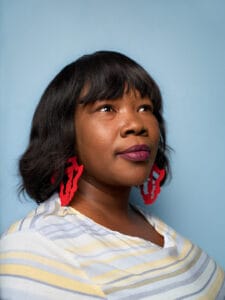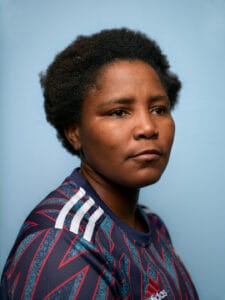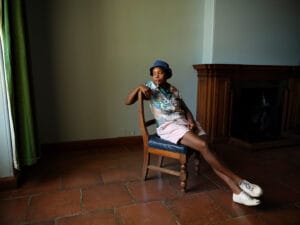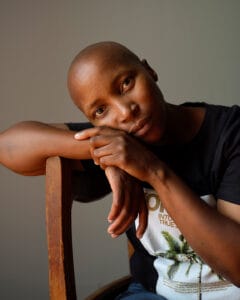Join GLAAD and take action for acceptance.
Trending
- Suni MF on Breaking Barriers in Hip-Hop and Winning Big at the BMI Awards
- GLAAD Amplifies Black Southern Queer Voices During LGBTQ Journalists Association Convention
- Queer Joy Shined at the 2025 MTV Video Music Awards
- WATCH: Dylan O’Brien and James Sweeney on ‘Twinless’ and Championing Original Queer Stories
- WATCH: Queer ‘Dancing with the Stars’ Cast Members Scott Hoying and Lauren Jauregui are Not Just Competing – They’re Changing Hearts and Minds
- How GLAAD is Combatting Censorship by Sending LGBTQ Books Straight to Capitol Hill
- TIFF’s 50th Film Festival Brings LGBTQ Stories to Screen & Talent to Toronto
- Bring Them Home: Deploying Our State National Guard for Political Purposes Endangers Public Safety
2024 Studio Responsibility Index
Films with LGBTQ Characters
27.3% (72.7% FILMS WITHOUT)
No Data Found
No Data Found
Of the 256 films released theatrically and direct to streaming by the ten distributors counted in this study in 2023, 70 feature LGBTQ characters (27.3 percent). This is a decrease of 1.2 percentage points from the record high of 28.5 percent in the previous study.
Of the 170 LGBTQ characters counted, 95 are men (56 percent), 67 are women (39 percent), eight are nonbinary characters who are not explicitly identified as transgender on screen (five percent). Two of the women are transgender (one percent).
Gender of LGBTQ Characters
No Data Found
No Data Found
LGBTQ-inclusive Film Breakdown of Characters
No Data Found
Of the 70 LGBTQ inclusive films released in 2023, 38 included gay men (54 percent), 22 included lesbians (31 percent), 19 included bisexual characters (27 percent), two included transgender characters (three percent), and three included queer characters that don’t fall specifically into those other labels (four percent).
Identity Breakdown of LGBTQ Characters
No Data Found
No Data Found
Of the 170 LGBTQ characters counted, 82 are gay men (48 percent), 50 are lesbians (29 percent), 26 are bisexual+ (15 percent), five are queer characters that don’t fall specifically into those other labels (three percent), one is straight, and six have undefined sexual orientations.
Race of LGBTQ Characters
*Note: an additional four characters are non-human
No Data Found
Of the 170 LGBTQ characters counted, 78 are characters of color (46 percent). Of all the LGBTQ characters, 88 are white (52 percent), 29 are Black (17 percent), 14 are Latine (eight percent), 14 are API (eight percent), 17 are multiracial (10 percent), four are MENA (two percent), and none are indigenous. Four further characters are non-human (two percent).
Transgender Characters
No Data Found
No Data Found
Of the 170 LGBTQ characters counted, only two are transgender (one percent).
Of the 170 LGBTQ characters found this year, only two characters had a disability (one percent).
Screentime of LGBTQ Characters
No Data Found
Of the 170 LGBTQ characters, 64 appeared in over ten minutes of screentime (38 percent), 21 had between five and ten minutes of screentime (12 percent), 38 had between one and five minutes of screen time (22 percent), and 47 clocked under one minute (28 percent).
LGBTQ-inclusive Film by Genre
This year, once again, comedy was the most inclusive genre of films by percentage and number.
COMEDY
72 TOTAL / 31 INCLUSIVE (43%)
DRAMA
62 TOTAL / 18 INCLUSIVE (29%)
HORROR
31 TOTAL / 9 INCLUSIVE (29%)
ANIMATED/FAMILY
27 TOTAL / 4 INCLUSIVE (15%)
ACTION/SCI-FI/FANTASY
64 TOTAL / 8 INCLUSIVE (13%)
Gender of LGBTQ Characters with Significant Screentime
No Data Found
No Data Found
Of the 64 LGBTQ characters that had over ten minutes of screentime, 33 were men (52 percent), 28 were women (44 percent), and three were nonbinary characters who are not explicitly identified as transgender on screen (five percent).
Race of LGBTQ Characters with Significant Screentime
*Note: an additional three characters are non-human
No Data Found
Of the 64 LGBTQ characters that had over ten minutes of screentime, 29 are characters of color (45 percent). In total, 32 are white (50 percent), seven are Black (11 percent), four are Latine (six percent), 10 are API (16 percent), six are multiracial (nine percent), two are MENA (three percent), and no characters are indigenous. Three additional characters were non-human (five percent).
Theatrical Films with LGBTQ Characters
28.5% (71.5% FILMS WITHOUT)
No Data Found
No Data Found
Of the 256 films released in 2023, 187 were theatrical releases. Of those theatrical films, 53 were LGBTQ inclusive (28.3 percent).
Of the 256 films released in 2023, 69 were streaming releases. Of those streaming films, 17 were LGBTQ inclusive (9.1 percent).
Streaming Films with LGBTQ Characters
9.1% (90.9% FILMS WITHOUT)
No Data Found
No Data Found
Table of Contents
Share this
View Past Years’ Reports
MEASURE THE MOVEMENT
Your gift allows us to track the impact of our work, helping us better understand the state of acceptance and address the gaps with advocacy — like pushing for more trans representation in movies.
More Publications from GLAAD
Each year through extensive polling and research, GLAAD looks at the state of America’s hearts…
Below are some of the findings from this report:Of the 698 characters on scripted primetime series,…
The Where We Are on TV report analyzes the overall diversity of primetime scripted series…
“Southern Stories: A Guide for Reporting on LGBTQ People in Florida” is part of GLAAD’s…

